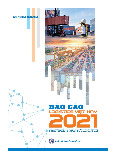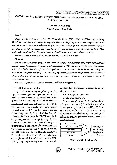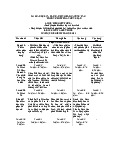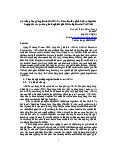



















Preview text:
SUBJECT
Recognizing the importance of business management in supply chain
management, our group has chosen the topic of "Supply Chain Management of
Apple Components in China" for our end-of-semester report. The essay includes the following main content:
Firstly, an analysis of Apple's SWOT.
Secondly, an analysis of China's PESTEL model to answer the question of
why China chose Apple as the place to produce and assemble its components.
Thirdly, an analysis of Apple's strategies in supply chain management.
Fourthly, based on the above analysis, an evaluation and proposal of
solutions to help Apple effectively manage its supply chain.
The essay is a process of researching and collecting primary and secondary
information from domestic and international research documents, journals,
statistical sources from the General Statistics Office, General Customs Office,
and international banks to analyze and evaluate the current status and issues of Apple's supply chain. TABLE OF CONTENTS
SUBJECT...............................................................................................................................................1
TABLE OF CONTENTS........................................................................................................................2
CONTENTS...........................................................................................................................................3 I.
APPLE’s SWOT ANALYSIS.......................................................................................................3 1.
Introduction to Apple.............................................................................................................. 3 2.
Apple’s development................................................................................................................ 3 3.
Swot Analysis............................................................................................................................ 5 a.
Strengths................................................................................................................................ 5 b.
Weaknesses........................................................................................................................... 9 c.
Opportunities..................................................................................................................... 12 d.
Threatens............................................................................................................................ 14
II. MACRO-ENVIRONMENT ANALYSIS.........................................................................................15 1)
Political....................................................................................................................................15
Firstly, Stable and strong political environment................................................................................15
However, currently, with the US-China trade conflict and political tensions in many major countries
such as Russia-Ukraine, large countries find it easier to move multinational companies to regions
like Vietnam and India to replace them.............................................................................................18
2. Economic......................................................................................................................................18
Overall, China's potential still holds an advantage as its infrastructure, logistics network, and skilled
labor supply remain superior to many emerging economies.............................................................21
3. Society..........................................................................................................................................21
Looking at the comparison chart, it is important to note that the cost of living in major cities such as
Beijing, Shanghai, and Shenzhen is relatively high compared to other cities in China. Therefore, the
high minimum wages in these cities may not necessarily reflect a higher standard of living for
workers. In addition, there are still many workers in China who earn wages below the minimum
wage, particularly in the informal economy. The Chinese government has been working to improve
labor standards and increase wages for workers, particularly in industries with high levels of labor
exploitation. Despite these efforts, there are still concerns about labor rights and exploitation in
China's workforce.............................................................................................................................26
4. Technology....................................................................................................................................26 5.
Legal........................................................................................................................................29
The VAT rate of 6% usually applies to interest and royalties (which may be exempt in cases of
technology transfer payments).”.......................................................................................................32
6. Environment.................................................................................................................................32
To combat the negative impacts of transportation infrastructure on the environment, the Chinese
government has implemented policies to encourage the use of public transportation, electric
vehicles, and green technologies. For example, subsidies are provided for electric vehicles, and
restrictions on the purchase of traditional gasoline vehicles have been implemented in some cities.
Additionally, the government has invested in the development of high-speed rail networks to reduce
the dependence on air travel and road transportation........................................................................34
In recent years, China has made significant efforts to reduce its carbon emissions and transition
towards cleaner forms of energy. In 2020, China announced its commitment to achieving carbon
neutrality by 2060, which has significant implications for the country's energy and environmental
policies. To achieve this goal, the government has implemented policies to increase the share of
renewable energy in the country's energy mix, such as wind and solar power. Additionally, the
government has invested in research and development to improve energy efficiency and reduce
carbon emissions in industrial processes...........................................................................................34
7. Summary.......................................................................................................................................34
III. LOGISTICS STRATEGY MANAGEMENT OF APPLE IN CHINA............................................39 1.
Apple’s logistics overall................................................................................................................39
b. Production................................................................................................................................. 43
c. Shipping.................................................................................................................................... 49
d. Distribution............................................................................................................................... 51
e. Return....................................................................................................................................... 53
f. Comment on apple's strategy in china....................................................................................... 54
IV. SOLUTIONS TO ENHANCE APPLE'S SUPPLY CHAIN EFFICIENCY IN CHINA..................57
The company needs to work faster with suppliers to decarbonize production activities related to Apple
and expand investment in climate and clean energy solutions worldwide.............................................59
To support a healthy and clean environment for all, Apple proactively takes steps to improve product
design, production, energy use, and recycling programs, including:.....................................................59
Choosing environmentally acceptable raw materials............................................................................59
Reducing waste from the production process........................................................................................59
Providing software tools that enable users to control the energy-saving features of their devices........59
V. CONCLUSION................................................................................................................................59 ACKNOWLEDGEMENT
Throughout our study at Hoa Sen University, we have learned a lot of
necessary and useful knowledge and skills through the learning process. What is
particularly important is that I have completed my final term paper for the
International Business Management course. To achieve this result, it is thanks to
the dedicated teaching, guidance, and support from the professors at Hoa Sen
University. I express my sincerest and deepest gratitude to them.
Especially, we would like to express our gratitude to Mr. Vu Hai Nam, who
has given us his affectionate, meticulous guidance and shared with us valuable
knowledge throughout the process of completing our paper.
Here, we would like to express our thanks to the professors of Hoa Sen
University, the Faculty of Logistics - International Business and the leaders of
the university for creating the conditions, providing modern equipment for us to
study in a professional environment to achieve the best productivity. We wish the
professors and teachers good health, happiness and success.
Although our term paper has been completed, it is still not perfect and has
some shortcomings. Therefore, we sincerely hope to receive feedback and
suggestions from the professors and teachers to improve our paper.
We would like to express our sincere thanks! FIGURE CATALOG
Figure 1.1: Apple Inc's brand image from 1976 to 2015.
Figure 1.2: Apple Inc's revenue by product from 2019 to 2022.
Figure 1.3: Apple Inc's net income from 2005 to 2022.
Figure 1.4: Apple's product market share produced in China.
Figure 2.1: Political stability chart of China.
Figure 2.2: Economic development indicators of China from 2020 to 2022 and
projections for 2023-2024.
Figure 2.3: Some labor cost indicators in China from 2010 to 2021.
Figure 2.4: Annual average wages of production workers and machine
operators in 13 countries, including the United States.
Figure 2.5: Top 10 semiconductor-buying companies in 2020.
Figure 2.6: Carbon dioxide emissions in China from 1960 to 2021.
Figure 2.7: Comparison of Apple Inc's and Huawei's phone products from 2019 to 2022.
Figure 2.8: Apple's development in the Chinese market at an astonishing pace.
Figure 3.1: The process of launching Apple Inc's products.
Figure 3.2: Apple Inc's supply chain.
Figure 3.3: iPhone screen components.
Figure 3.4: Image of a produced iPhone screen.
Figure 3.5: Image of iPhone component production in a factory.
Figure 3.6: Percentage of Apple products produced in China.
Figure 3.7: Apple's supply chain model for iPhone products.
Figure 3.8: The timeline of iPhone transportation to the USA.
Figure 3.9: Apple's inventory turnover.
Figure 3.10: Apple's distribution strategy. INTRODUCTION
We are living in a highly digitalized economy, an advanced era where
information technology is changing day by day. All countries are influenced by
this transformation, and globalization and integration are becoming a trend of
the era, narrowing the gap between countries worldwide. For this reason, the
global supply chain is gradually becoming a strategic weapon, helping
businesses enhance their competitive advantages in the economic market. A
strong, good, and reliable supply chain will bring significant benefits to the
development and integration not only of that country but also of the global economy.
In addition to the general impacts of the global economic environment,
most countries, including many supply chains, are affected by the consequences
of wars, natural disasters, climate change, greenhouse effects, storms, floods,
earthquakes, tsunamis, etc., which occur regularly every year, causing damage to
people and property. Moreover, from 2019 to now, the whole world has been
suffering from the prolonged effects of the Covid-19 pandemic, causing many
serious consequences. Faced with the direct impact on the economy, culture, and
society, many countries want to find solutions to address these issues, maintain
stability, and not be led or manipulated by the excessively strong global supply
chain changes as today. To achieve the goal of "growth for businesses," large
companies in various industries in the global supply chain always seek every
way to promote businesses through new technologies, urban planning,
production standards, product improvements, and distribution to customers. 1
In recent years, besides the strong supply chain models of large
corporations such as Coca-Cola, Unilever, Colgate-Palmolive, Cisco Systems,
Inditex, etc., we cannot fail to mention the famous supply chain of the giant
company, Apple. This business was once considered the strongest and most
efficient global supply chain from 2012 to 2015. Recognizing the importance of
business management in supply chain management issues, we have chosen the
topic: "Supply Chain Management of Apple's components in China" for our end-
of-term report. The essay includes the following main contents:
Firstly, the SWOT analysis of Apple.
Secondly, the PESTEL model analysis of China to answer the question: "Why China?"
Thirdly, Analyze Apple's supply chain management strategies.
Fourthly, Based on the above analysis, evaluate and propose solutions to help
Apple effectively manage its supply chain. 2 CONTENTS I. APPLE’s SWOT ANALYSIS 1. Introduction to Apple
Apple Inc., formerly known as Apple Computer, Inc., was founded by
Steve Jobs and Steve Wozniak in 1976. It is a U.S. manufacturer of personal
computers (Mac), smartphones (iPhone), tablets (iPad), computer peripherals,
and computer software. It is the first successful personal computer company and
is popular for its graphical user interface.
Headquarters: Cupertino, California, USA Founded: April 1, 1976
Service areas: Computer hardware, software, consumer electronics, and
electronic software distribution
Geographical coverage: Worldwide
Founders: Steve Jobs, Steve Wozniak, and Ronald Wayne
CEO: Tim Cook - current CEO
Total assets: USD 338.516 billion (2019)
Total employees: 137,000 2. Apple’s development
Apple Inc. is a multinational company based in the United States specializing in
the development, production, and sale of computers, consumer electronics, and
software along with related services. It is one of the most reputable brands in the
world, particularly in terms of market capitalization and brand recognition. 3
Figure 1. 1. Image of the Apple Inc. brand through the period from 1976 to 2 Source: Apple-Inc
In 1984, Apple introduced the Macintosh (the first personal computer sold
without programming language).
In 1994, Apple, IBM, and Motorola formed the AIM alliance to create a
new computer platform (PowerPC Reference Platform, PReP).
In 1997, Apple acquired NeXT for its NeXTSTEP operating system and
brought Steve Jobs back to the company.
On November 10, 1997, the company launched the Apple Store website.
In 1998, Apple executed several deals such as buying the Key Grip
software project from Macromedia, the Astarte company, and the DVD
production platform Spruce Technologies.
Since 2001, the company has made remarkable strides when the iPod MP3 player was introduced.
On January 9, 2007, the company changed its name to Apple Inc. and
shifted its focus from computers to consumer electronics. Steve Jobs introduced
the iPhone, iPad, iPod Touch, and Apple TV. 4
On August 20, 2012, Apple's stock price rose, bringing the company's market
capitalization to a record high of over 624 billion USD.
In 2014, Apple reported sales of over 51 million iPhones and 26 million
iPads, a profit that made it the best-selling quarter of all time. Apple has also
topped Interbrand's Best Global Brands rankings for six consecutive years. The
total asset valuation reached 214.48 billion USD.
Apple's development in technology, computer hardware, and smartphones
has been at the forefront from the start. The company's smartphones - iPhones
with their own iOS operating system, generated a total of 54% of the company's total revenue 3. Swot Analysis a. Strengths
Firstly, the company has the most valuable brand in the world.
Apple has been ranked number 1 by Interbrand for the 9th consecutive year “
with a brand value of $408 billion. Following Apple is Amazon at 2nd place
with a brand value of $249 billion and Microsoft at 3rd place with a brand value
of $210 billion. With a market capitalization of $2.23 trillion as of April 2021,
Apple Inc. is considered the largest corporation in the world in 2021.”
Secondly, Apple leads trends by using top-notch technology.
Apple is the first company to introduce some of the most innovative
products, changing the world with iPhones, iPads, AirPods... Along with
Amazon and Google/Alphabet Inc., Apple continuously introduces new trends in
technology development. From introducing breakthrough features such as face
recognition through Face ID (iPhone X) or augmented reality applications 5




